Sibipiruna
Poincianella pluviosa
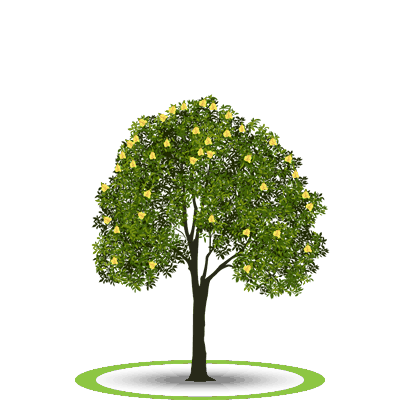
- Height
- 8 to 18 meters
- Growth
- Moderate: 1.5 meters per year
- Flowering
- Its flowers are small, yellow, gathered in cones, which exhibit in their tips chalices not yet opened in the brown color, suggesting small spears.
DEVELOPMENT STAGES

SEEDLINGS
Post-germination
10 to 15 days

BABY PLANT
Pre-planting
4 to 5 months

BUSH
Juvenile
1 to 3 years
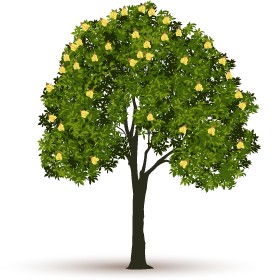
TREE
Adult
3 to 5 years
CULTURE AND SYMBOLISM
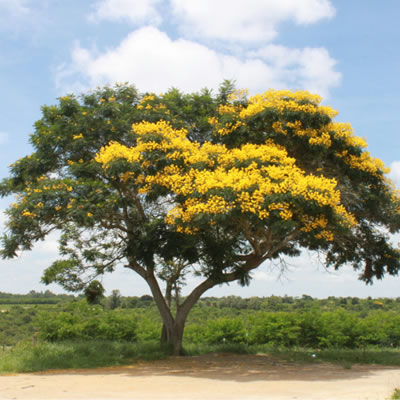
The name Sibipiruna comes from the tupi and means black shell. The Sibipiruna is an extremely ornamental secular tree of fast development. Its large and abundant canopy provides fresh shade and exuberant flowering.
Common in streets, parks and avenues of many cities in Brazil, it is easily confounded with other species such as redwood by the similarity of its foliage.
Sibipiruna bark, trunk and branches are rich in tannin, a substance that has astringent, antiseptic and antioxidant properties. Studies report medicinal properties of this plant related to antimalarial, antimicrobial and anti-inflammatory activities.
SEASONAL BEHAVIOUR
Sibipiruna flowering starts in winter and lasts through spring. In the other seasons the tree, even without flowers, remains very ornamental with an elegant silhouette and dense foliage.
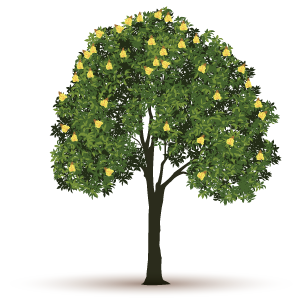
SPRING
September to December

SUMMER
December to March

AUTUMN
March to June
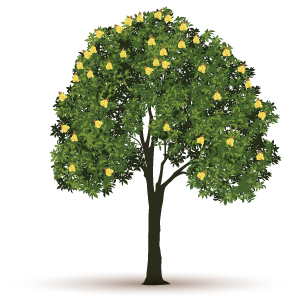
WINTER
June to September
CARE AND HANDLING
The growth and development of plants result from the interaction between genetic and environmental factors. BioParque values the use of certified seeds, prioritizing the quality of the plants. In addition, sustainable management practices are adopted in order to provide optimal conditions for the development of trees, also respecting the environment.
WATER AND NUTRIENTS
- Irrigation: The amount of water required by trees varies according to their species and environmental conditions. BioParque has developed an irrigation program to meet the different needs of tree species.
Before it can be transplanted into the soil, Sibipiruna will be watered frequently. In field conditions, establishment phase or juvenile period of the tree, complementary irrigations will be done whenever necessary. In the adult phase only salvage irrigation will be done in case of long droughts.
/li> - Fertilization: Fertilizations will be carried out according to the nutritional requirements of each species throughout their life cycle, according to the results of periodic technical evaluations.
PLANT HEALTH CONTROL
- Preventive actions: periodic inspections will be carried out to prevent possible outbreaks of pests.
- Alternative technologies: specific ecological actions will be used, whenever necessary, to prevent and fight pathological agents.
PRUNING
When necessary, for safety reasons, to improve the structure or health of the tree, pruning will be performed.





